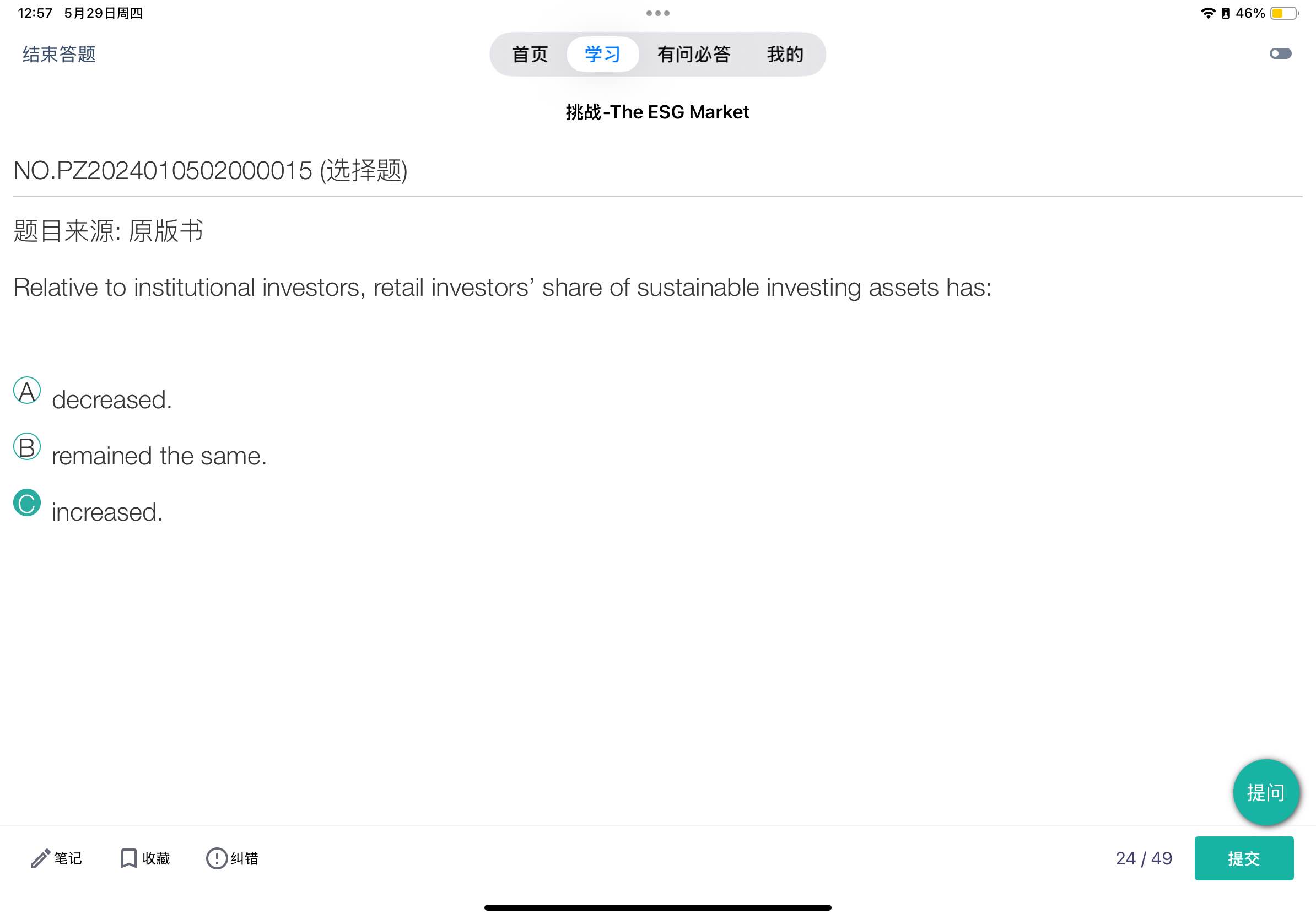嗨,从没放弃的小努力你好:
同学,你好。
Relative to institutional investors, retail investors’ share of sustainable investing assets has: (课后题#15)
A. Decreased.
B. Remained the same.
C. Increased.
Correct Answer: C
C is correct. Although institutional investors tend to dominate the financial market, interest by retail investors in responsible investing has been steadily growing: In 2012, institutional investors held 89% of assets compared with 11% held by retail investors. In 2018, the retail portion had grown to one quarter.
How has the adoption of ESG investing by retail investors compared to institutional investors? (课后题#27)
A. It has been slower.
B. It has been faster.
C. It has been at the same pace.
Correct Answer: A
A is correct. The adoption of ESG investing by retail investors has generally been slower than for institutional investors. In the United States, only a small fraction of total assets invested had gone to those referencing ESG considerations.
这个问题很有代表性,很多同学会觉得“课后题15”和“课后题27”说的是同一件事:零售投资者在ESG投资中的比例在上升,为什么一个说“Increased”,一个却说“slower”?我们来深入分析一下,两题其实考察的是两个不同的角度:
课后题#15 关注的是 “相对比例的变化”
题干关键词: Relative to institutional investors, retail investors’ share of sustainable investing assets has…
- 选项C解释: Retail investors 的占比上升了,从2012年11% → 2018年25%。
- 考察重点: 市场份额的相对变化 —— 哪一方的“蛋糕占比”变多了。
理解方式:就像过去的“蛋糕”几乎都被机构吃了,现在零售投资者分到的“蛋糕比例”明显变大了。虽然总体还是机构占大头,但零售的“份额”增加了。
课后题#27 关注的是 “采纳ESG的速度”
题干关键词: How has the adoption of ESG investing by retail investors compared to institutional investors?
- 选项A解释: 相较而言,零售投资者采纳ESG的速度更慢。
- 考察重点: 采纳或转型ESG投资的“速度快慢”,不是看份额比例,而是看“谁转得快”。
理解方式:虽然零售投资者现在占比变多了(也就是前一道题说的),但这个“份额的上升”是慢慢发生的 —— 比机构更“慢半拍”。
总结一句话记忆:
- #15是看“占比”→ Increased
- #27是看“速度”→ Slower
两者可以同时成立,并不矛盾。只是关注角度不同。
----------------------------------------------
努力的时光都是限量版,加油!





